Retro Neo
(or What's New is Old Again)
[Note: Some of these photos were published in the online magazine "Luxury Splash of Art."]
In 1959, Jack Barrett, a retail entrepreneur from the small North Texas town of Denison, decided his reputation as a wealthy Texas playboy needed something more. He already had two homes, a ranch, and his own private airplane, in which he flew friends and business associates to social events and favorite hunting resorts. But it was almost 1960. He needed something undeniably of the times, something that expressed the urbane, contemporary man he was. He needed a “playboy pad.” And so he built one.
Gutting the third floor of the old Denison YMCA building, which he bought and eponymously renamed “The Barrett Building,” he designed his playboy pad with all the modern “conveniences” of the day. Built-in TVs stared from the walls of every living and sleeping area. Anything that could be operated (however awkwardly) by a push-button was. Built in blenders festooned kitchen and bar counters, and every room featured the austerity of mid-century modern design. The east wing of this U-shaped 5,000 square foot “pad,” consisted of a large formal dining room opening into the kitchen’s glare of turquoise tile and gleaming chrome.
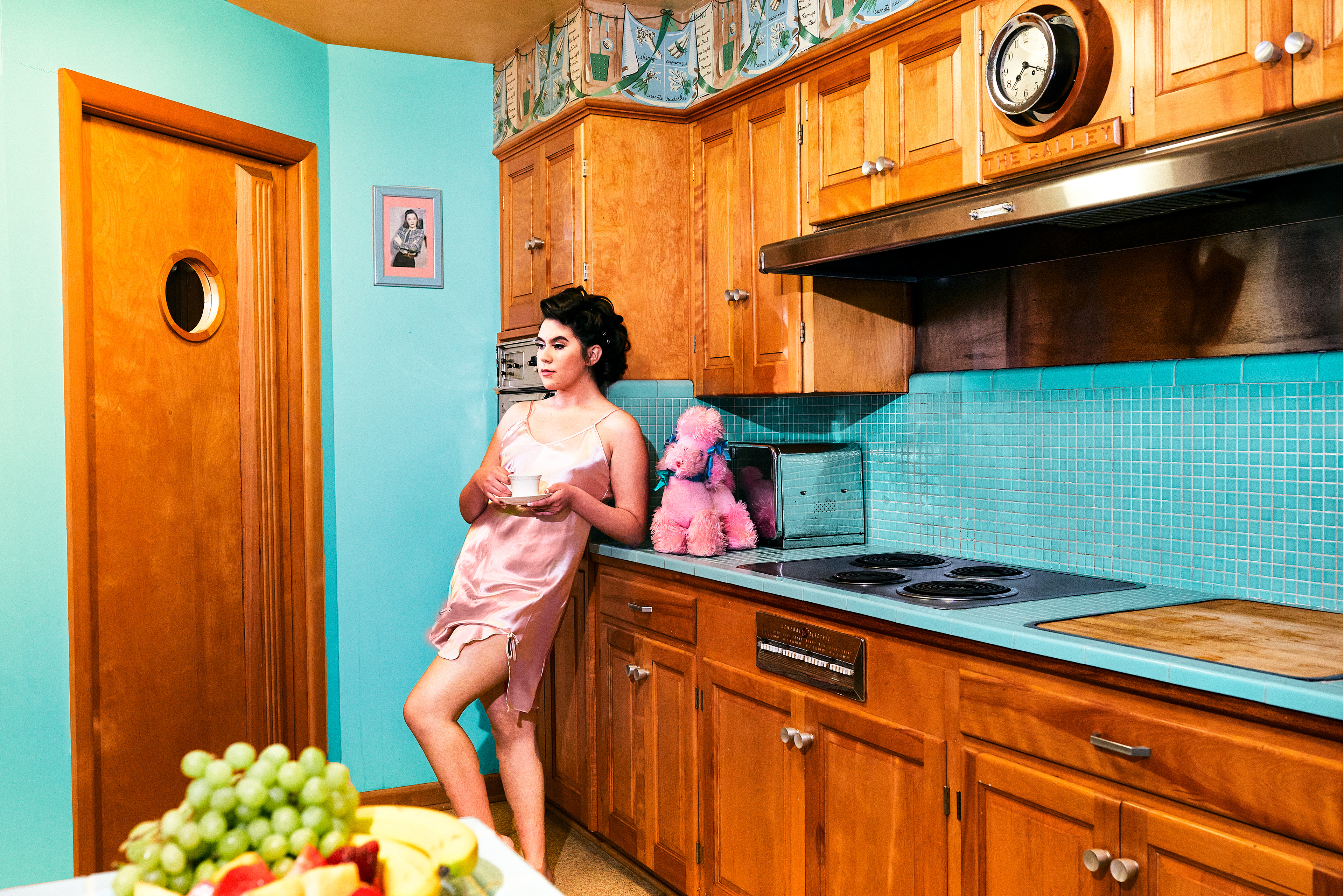
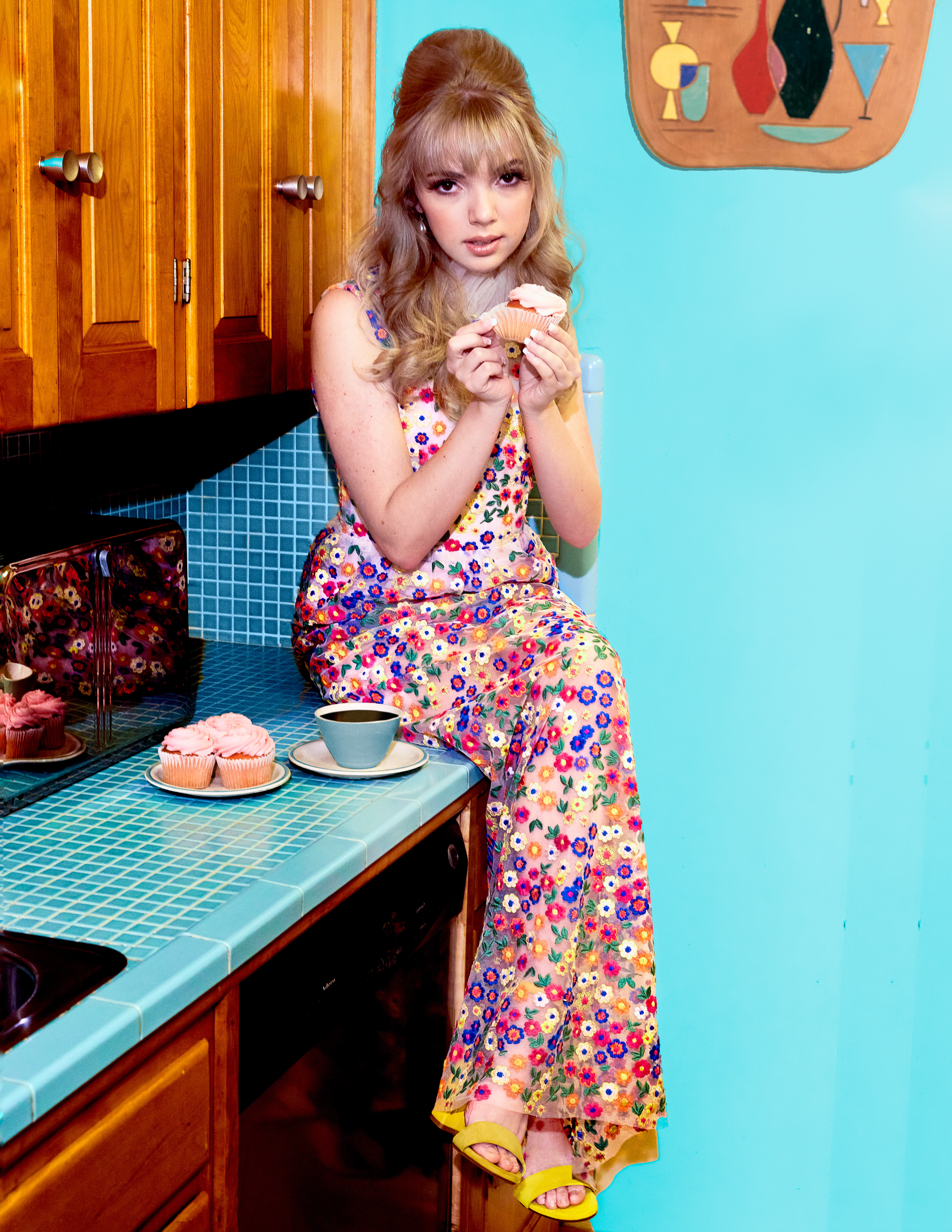

The kitchen, in turn, opened into a lounge with a full bar which adjoined a very large living room, complete with a huge gas log hearth, a baby grand piano, chandeliers, track lighting, oversized table lamps and an armada of upholstered chairs, sofas and settees. Beyond this living area lay the master suite, with its own living area, sitting room, private bath, and, of course, bedroom – this one including an electric clock inexplicably flush mounted to the ceiling directly above the bed.
The west wing housed the “Dog Bar,” a lounge with a full bar and featuring a 10-foot wide caricature painting of dogs partying in nightclub attire. Adjacent to the Dog Bar, a suite of 4 guest bedrooms, each with a full bath, stretched the remaining length of the apartment.

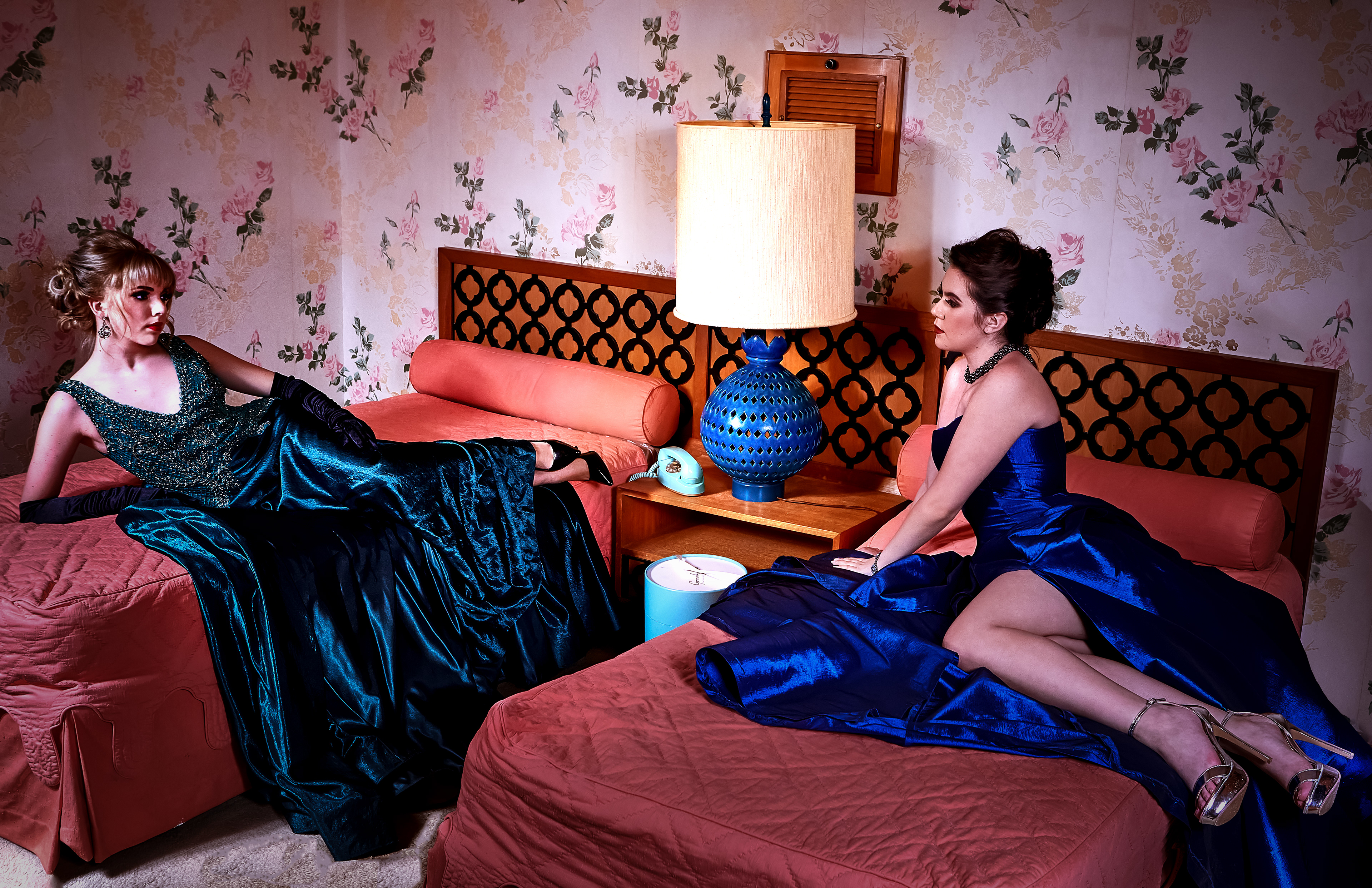
This 1960 playboy pad is the setting for this editorial.
We learned about Jack Barrett’s apartment indirectly through the Barrett Building’s current owner, who generously offered it as a shoot location – albeit a remote one, some 7 hours from my studio in Houston. The owner sent a small brochure with photos of the rooms and furnishings to a producer/stylist who contacted me. The photos show details of an idiosyncratic apartment filled with mid-century modern furnishings in museum condition. That setting, we all agreed, had a lot of potential.
In the ensuing few months, we lined up collaborators, including dress designers, shoe, accessory, and jewelry designers, a top hair and makeup artist and two models. We planned. We weren’t doing a period shoot. We thought more of a lifestyle shoot with two fashionable, modern young women contemplating a formal evening while spending a luxurious day in a mid-century styled hotel suite. But as it turned out, the photos we were given were old. Very old.
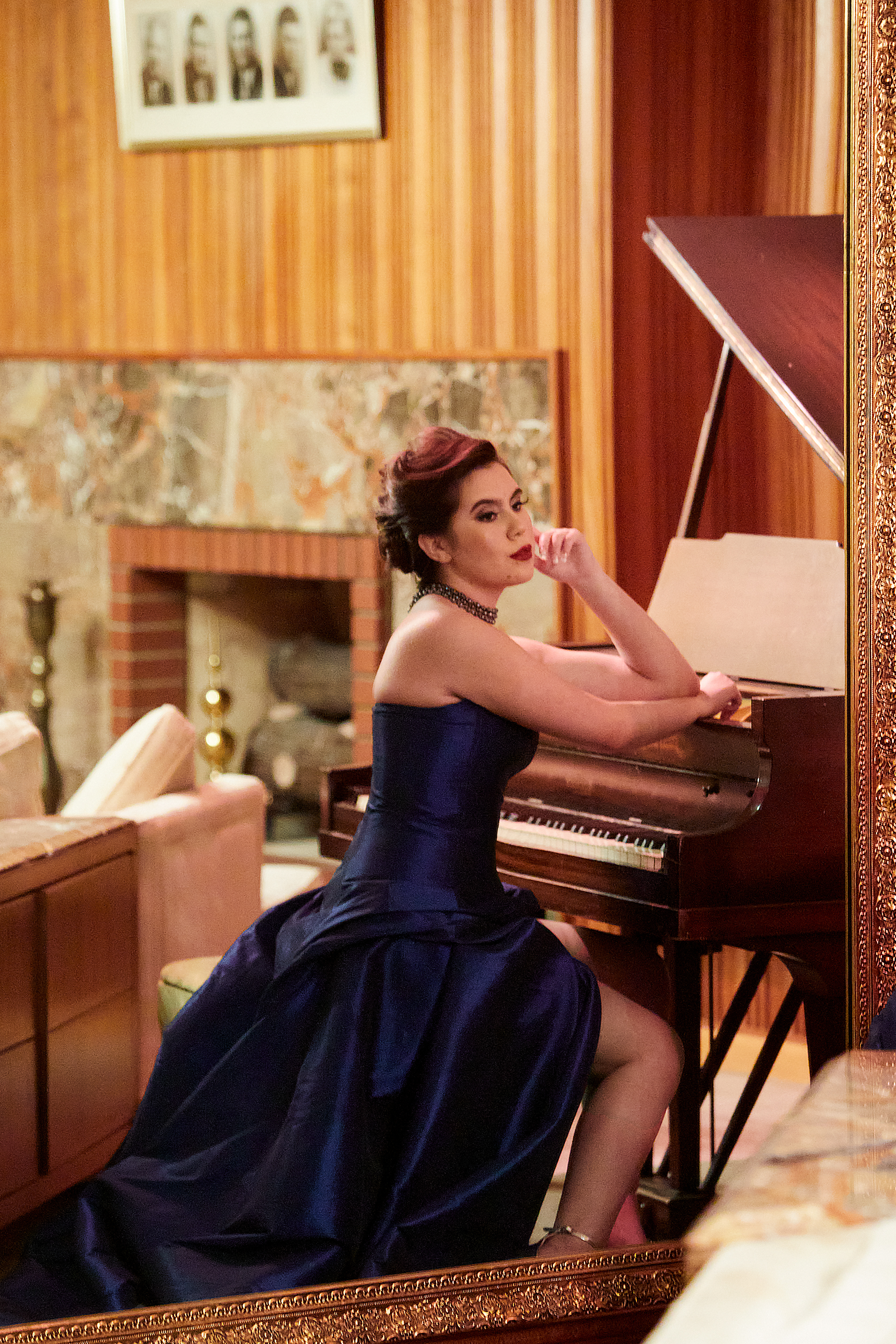


If Breakfast at Tiffany’s is the high expression of mid-century style with the Bates Motel at the other extreme, we were far more likely to encounter some manifestation of Norman Bates than the spirit of Audrey Hepburn. The minimalist mid-century furniture remained, but all polish had long worn away, leaving everything scuffed and dingy. Sofa cushions sagged drastically under even the models’ slight weight. Shelves designed to hold the decorative items that give a human space some color, warmth, and a sense of regular use were almost entirely bare. The place was, frankly, dismal. And making believe this old apartment was a posh, period hotel was not going to work.

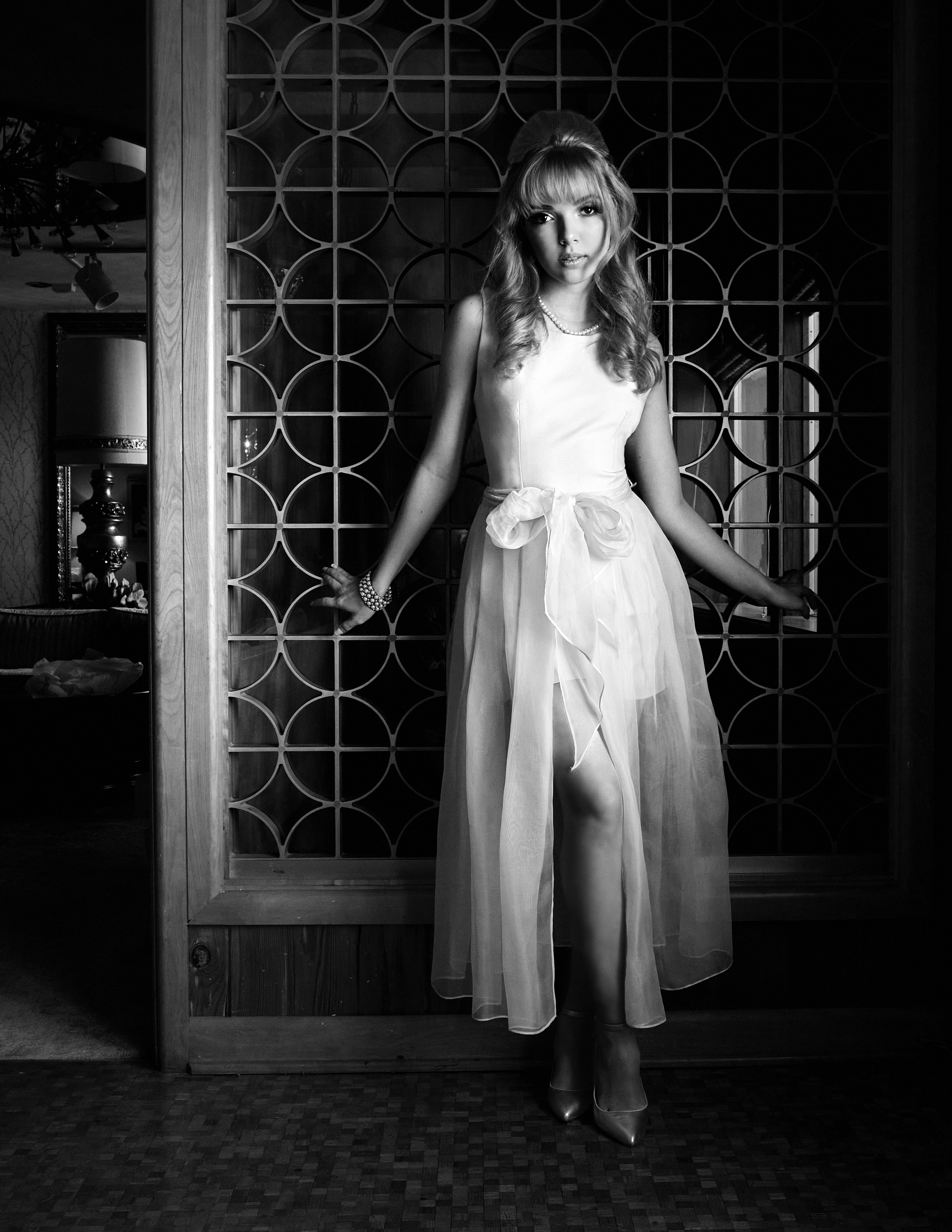
So, 300 miles from home, with a truck full of studio gear, tens of thousands of dollars in wardrobe and accessories, and a crew of 7 already in place, we just decided to shoot what was interesting and hope for the best. And as we shot those interesting features, something interesting happened. Instead of the pretty, modern young women in their shiny clothes transporting the bachelor pad into the present, as we had originally expected, the weight of this dark, dreary place, with its odd furnishings, shadowy corners, and timeworn woodwork, seemed -- like a mystical forest -- to pull the young women back to its past. Back to a time when a TV in every room seemed aspirational, every new gadget was better than the last, and vivid pastels gleamed like hope in every kitchen. We would not, it seemed, make the old new again, but the new would be made old. We became immersed in the golden post WW II era, a period of American ascendency worldwide, but also a time when most everyone had a friend or family member who had died in World War II, or Korea, and soon enough, Vietnam, when the threat of nuclear annihilation hung over us more heavily than the L.A. smog, and we had just begun to confront social ills that would plague us for many decades. An era, that, when we look closely, has much of its luster worn off like the furnishings in Jack Barrett’s pad.
And yet . . . despite their surroundings, the young women still found the personal magic to shine. They still emerged gleaming and whole. In the present. In a small way, then, this editorial hints at the continual clash of ages and the challenge for each generation to overcome the delusions of the past with some present clarity and some optimism for the future. And it also, coincidentally, showcases the significant talents of some working designers, artists, and models working in Texas, today.
-30-
Production/Creative Team: Misty Novak, Adria Garza Martinez
Dennison, Texas Set Location: Historic Barrett Building
Owner: Shelley McBride
Models: Sam McCall, Mia Isabella
Designers:
Laisa Macias -- Dress designer
Roger Canamar Couture – dress designer
Daniel Hinojos - dress designer
Alice d’Italia -- shoe designer
Hair/Makeup Artist: Stephanie Eiland
Pineapple House Beauty
Accessories by Hello Tallulah Vintage